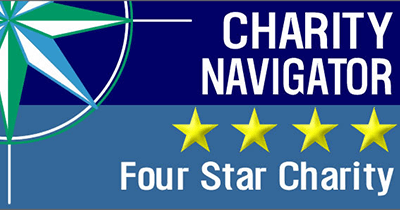
Please speak with a professional advisor prior to making any estate planning decisions to ensure your wishes are faithfully and correctly fulfilled. The below information is in no way a recommendation for action or legal advice.
What is planned giving? To put it simply, planned giving can be best described as the process of donating planned gifts, i.e., contributions that are arranged and allocated at either a set or not set date in the future, most often granted after the donor’s passing.
Planned giving programs are often called legacy programs, which enforce the concept of stewarding and cultivating strong and meaningful relationships with the gift donors themselves. Apart from that, these legacy programs also strive to support the donors with the often complicated enacting process of planned giving.
In this article, the team at Habitat For Humanity of Broward will cover the basics of planned giving programs.
The Significance of Planned Giving
Next to major gifts, experts usually agree that planned gifts are the most significant nonprofit contributions as they can significantly help an organization and simultaneously contribute to the donor’s legacy. The most obvious difference is that major gifts will most likely be received immediately. Planned gifts occur in the future, but the scale and the scope of the contribution very often create an enduring legacy of huge impact in line with the donor’s values.
As a matter of fact, various organizations don’t really seek opportunities for planned giving, as they see the process as complex.
Terms in Planned Giving Programs
To better understand how these programs actually work, here are some of the most commonly used terms in these processes, along with their definitions:
- Bequest intention: This can be defined as the notice of the donor’s intent to contribute. A bequest intention isn’t a legally binding commitment but rather a courtesy, informing an organization that the donor will donate to them in the future.
- Bequest expectancy: This can be best described as the approximate value of the gifts based on the organization’s already existing planned giving data, helping organizations better visualize their future revenue.
- Planned gift notification: This can be defined as the official notification to the organization containing formal information about receiving a planned gift.
Asset Types in Planned Giving
What will organizations typically receive as gifts in these programs? The following are the most common asset types:
- Non-probate transfer vehicles: These allow the planned donors to bypass the entire probate process, or the process by which a will is usually proved in a court setting, and give it directly to the organization. Simply put, the transfer takes place outside a court setting. These assets can then be used for checking and saving accounts, real estate, the money market, and various other investment funds.
- Real property: This will usually be land or additional property (such as a building) along with the property rights associated with the assets. These contributions will typically be unencumbered or encumbered. In the latter case, a third party is often involved, having a claim to the property in some way (payment plans, mortgages, and so on).
- Non-cash assets: Simply put, this gift isn’t cash. As such, these types of planned gifts will most often be life insurance policies, stock, or retirement accounts. These types of planned gifts may require different legal processes for receiving them based on their nature, worth, and specific, state-related requirements.
Assessing the Value of the Planned Gifts
Most of the time, the value of the planned gift is valued in the following ways:
- Present value: This represents the current value of the gift the organization will receive in the future. Before the organization actually gets the gift, the donor will usually pledge a specific percentage which will differ from the value of the gift when the organization gets it. In some cases, the future value of a contribution may be worth less than the present value due to factors like inflation, but it may also become more valuable, depending on the actual gift.
- Cost basis: This might be a property’s or an asset’s price determined at the moment of the original purchase or what the donor initially paid for the planned gift. When organizations receive the item as a donation, the value of the gift that has accrued since the initial purchase may be taxed in some cases; at the time of receiving the gift, the value of the asset may be depreciated or appreciated. In the latter case, the current value will be higher than the original cost, while in the case of depreciation, the asset will cost less than it has at the time of the purchase.
- Fair market value: This is the estimated value of an asset or property based on a price that a seller or buyer who knows market trends would agree upon in a classic transactional setting. For instance, someone in your team who understands the real estate market will be able to determine the price and the quality of a building and give fair market estimates.
The Benefits of Planned Giving
Benefits for Donors
Donors can take advantage of several benefits that stem from planned giving. Below, we’ll talk about the most common advantages.
Tax Breaks
From a fiscal standpoint, sizable tax breaks can be regarded as a massive advantage in arranging a planned giving process. Still, the specifics of the break will significantly vary depending on several different factors, meaning that every case will need to be evaluated individually.
Building a Legacy
The act of gifting and giving back to the community for a greater purpose will often enable the donor to build and leave a legacy that will make their memory live on even after their passing.
Benefits for Nonprofits
Organizations can also benefit from these programs.
Capitalization on Donor Loyalty
Various donors think about giving major gifts in their lifetime, but most lack the flexibility to act upon it appropriately. Planned giving enables them to contribute these gifts after their passing when other life expenses won’t be interfering factors.
Large Gifts
Experts usually agree that these are among the largest gifts when looking at donation amounts.
Planned Giving vs. Memorial Funds
Planned Gifts
As mentioned earlier, planned gifts are typically arranged by the donors themselves and set up in advance, usually incorporated in a will.
A family might opt to donate money in a memorial fund to a charity that meant a lot for their passed loved ones; memorial funds will typically come from friends and family, while planned giving is a result of a premeditated decision made by the donor.
Memorial Funds
These are most often created after the passing of someone. These funds can either be a one-time fundraiser or continual funds with regular donations. In most cases, memorial funds are created to help the family of the person who passed away to cover daily expenses or funeral costs. Still, sometimes, a charitable fund is designed to make donations in honor of the person who’s passed. In these cases, memorial funds share more similar traits with planned giving.
Find Out More
To learn more about planned giving and the processes surrounding it in Florida, feel free to reach out to us.






